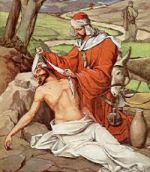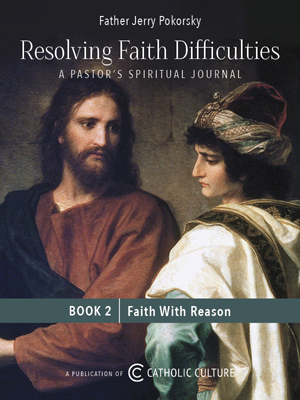Feastday Highlights: St. Brigid of Ireland, February 1
By Jennifer Gregory Miller ( bio - articles - email ) | Jan 29, 2014
The General Roman Calendar does not have a saint for February 1st, but in Ireland this is the Feast of St. Brigid, the patroness of Ireland (also referred to as Brigit, Bridget, Brighid, or Bride). St. Brigid and St. Patrick share the honor of planting Christianity deep in the hearts of the Irish. The most popular of stories regarding Brigid are the ones that describe larger-than-life legends, but St. Brigid is the one most responsible for spreading female monasticism in Ireland.
St. Brigid was born around 453 and died around 523. Some stories mention that Brigid might have been baptized by St. Patrick, or at least was inspired by his preaching. Because St. Patrick died around 461-464, she would have only been a small girl at any of these meetings. Therein lies the difficulty with the life of Brigid. There are very little solid facts on her life, and then there are many legends and stories that have arisen over the centuries that make it harder to piece her life into a connected whole. Another difficulty is that many neo-pagans reviving old Celtic druidism use Brigid for their beliefs. This requires more sifting to find the true St. Brigid.
I recently read Women and the Religious Life in Premodern Europe by Patricia Ranft which breaks down the history of women religious starting with the birth of monasticism in the fourth century until the seventeenth century. She shared some interesting facts on Brigid, particularly about the double monastery:
Brigid instilled in the female communities of her day a discipline, organization, and spirit that would remain characteristic of Irish monasticism for centuries....
Unfortunately, the surviving vitae of Brigid are lean on facts, so only the barest outline of her life is known. She was born of noble parents (or at least a noble father) in Conaille Muirtheimhne and was well educated. She refused to marry when her parents so requested and instead took a vow of chastity before bishop Macccaille, a disciple of Patrick. In the years that followed, her personality, education, and holiness attracted so many men and women that she founded the great monastery of Kildare, “head of almost all the churches of Ireland and overtopping (like a mountain peak) all the monasteries of the Irish.” Brigid’s biographer describes it as somewhat similar to a double monastery. The women shared a common rule and a church with the men, but each monastery was autonomous. The men gave obedience to a bishop, the women to an abbess. They had separate entrances to the church, and the church had a high partition running down its length to keep each side hidden from the sight of the other.
As Brigid’s reputation grew, demand for her direction increased and led to numerous monastic foundations for women throughout Ireland. She provided the monasteries with a rule, but it is not extant. Her contemporaries praised her charitable acts and hospitality, but it was her scholarship that impressed them the most. Her wisdom was sought after by the “most eminent persons”; Brendan of Clonfert (486-575) supposedly asked her for instructions “on a certain religious subject.” On occasion she exercised the clerical function of preaching to men.... Her monasteries educated the women within and probably also the girls in the surrounding area (pp. 16-17).
For a biography with further details, see the article in the Catholic Culture library, St. Brigit: The Mary of the Gail by Hugh de Blacam, which includes pronunciation of her name and information on her mantle.
St. Brigid's life and legends are very popular in children's books, and choices abound. I hesitate reading aloud some stories if there is more focus on the natural goodness of the saint and not emphasizing the reflection of her love for Christ and His grace in her life. A recent picture book worth mentioning that does feature St. Brigid's striving for holiness: The Life of Saint Brigid, Abbess of of Kildare by Jane G. Meyer, illustrated by Zachary Lynch. The colorful illustrations evoke Celtic manuscripts, and Brigid's story is unfolded gently, including some legends, but also grounding her life as centered on Christ and her Faith.
Brigid was known for her generosity and kindness to others, especially to the poor, which is one aspect of the Gospel that is stressed often by Pope Francis. Discussing the Corporal Works of Mercy with my children connects very well with her feast day. Through her intercession may St. Brigid help us to see Christ in others and to always act in charity.
All comments are moderated. To lighten our editing burden, only current donors are allowed to Sound Off. If you are a current donor, log in to see the comment form; otherwise please support our work, and Sound Off!








